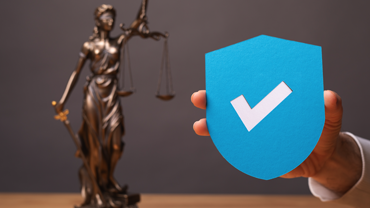 Briefing
Briefing
COVID-19 Prevention Non-Emergency Regulation | Keenan
The COVID-19 Prevention Non-Emergency Standard (Title 8, Section 3205-3205.3) requiring employers to protect workers from hazards related to COVID-19 is now in effect. The Office of Administrative Law approved the standard on February 3, 2023.
This permanent standard replaces the COVID-19 Emergency Temporary Standard (ETS) and will be in effect for 2 years, expiring on February 3, 2025, with recordkeeping requirements in effect through February 3, 2026.
While some of the requirements in the ETS remained the same, there were some changes. Some of the notable provisions include:
- Definitions for certain terms, such as “infectious period” and “close contact”
Infectious Period is defined as being two days before they first develop symptoms until it has been 10 days since symptoms first appeared, 24 hours have passed with no fever, without the use of a medication, and symptoms have improved, or if no symptoms have developed, two days before until 10 days after the first positive test for COVID-19 was collected. However, if the California Department of Public Health (CDPH) has defined infectious period, then the CDPH definition will apply. The most current definition can be found in the State Public Health Officer Order of October 14, 2022. Review current guidance from the CDPH frequently as when the CDPH definition changes, so does the regulation.
Close Contact is defined as being within six feet of a COVID-19 case for a cumulative total of 15 minutes or greater in any 24 hour period within or overlapping with the infectious period, unless the close contact is defined by the CDPH by regulation or order. If the CDPH changes this definition, the regulation will change. The CDPH has defined close contact in the State Public Health Officer Order as follows:
- For indoor spaces of 400,000 or fewer cubic feet per floor, close contact is defined as sharing the same indoor airspace as a COVID-19 case for a cumulative total of 15 minutes or more over a 24-hour period during the COVID-19 case’s infectious period as defined by this section, regardless of the use of face coverings.
- For indoor spaces of greater than 400,000 cubic feet per floor, close contact is defined as being within six feet of the COVID-19 case for a cumulative total of 15 minutes or more over a 24-hour period during the COVID-19 case’s infectious period, as defined by this section, regardless of the use of face coverings.
- Offices, suites, rooms, waiting areas, break or eating areas, bathrooms, or other spaces that are separated by floor-to-ceiling walls shall be considered distinct indoor spaces.
- Face Coverings
Face coverings must be provided and worn when required by CDPH orders.
- Exclusion Pay
The requirement for the employer to provide exclusion pay to employees who have been excluded from work has been removed. You should inform employees that are excluded from work to benefits available under federal, state or local laws.
- Training and Instruction Regarding COVID-19
Employees shall receive training regarding COVID-19 in accordance with subsection 3203(a)(7) of the Injury and Illness Prevention Plan (IIPP).
The training and instruction are to be provided at the following times and to the following individuals:
- When the COVID-19 Prevention Plan (CPP) is adopted or updated;
- To all new employees;
- When an employee is given new job assignments for which training has not previously been provided;
- Whenever new substances, processes, procedures or equipment are introduced to the workplace and represent a new hazard;
- Whenever the employer is made aware of a new or previously unrecognized hazard; and
- For supervisors to familiarize themselves with the safety and health hazards to which employees under their immediate direction and control may be exposed.
- COVID Testing
Employers must make COVID-19 testing available at no cost and during employees’ paid time, to all employees of the employer who have had close contact in the workplace, with an exception for symptom-free returned cases. Testing is to be provided in a manner that ensures employee confidentiality.
- Ventilation
For indoor locations, employers must review applicable CDPH and Cal/OSHA guidance regarding ventilation, filtration and air quality and implement effective measures to prevent transmission through improved filtration and/or ventilation. “Interim Guidance for Ventilation, Filtration, and Air Quality in Indoor Environments.”
- Reporting and Recordkeeping
Employers must continue to keep records and track all COVID-19 cases until February 3, 2026. Employers must also track and keep a record of certain personal information concerning COVID-19 cases and close contacts in accordance with Labor Code section 6409.6.
Unredacted information on COVID-19 cases shall be provided to the local health department with jurisdiction over the workplace, CDPH, the Division, and the National Institute for Occupational Safety & Health (NIOSH) immediately upon request, and when required by law. You do not need to report until you are asked to do so.
Employers must report major outbreaks to Cal/OSHA.
We recommend you review and update your COVID-19 Prevention Plan or use the model plan provided by Cal/OSHA. The standard allows you to include your COVID-19 prevention workplace measures in your Injury and Illness and Prevention Plan (IIPP) or a standalone document. We recommend that you include your workplace measures in a separate standalone document.
The Cal/OSHA COVID-19 Prevention Resources webpage contains a fact sheet that describes the regulation, updated FAQs and a revised model CPP program. They will also be offering several virtual training sessions on the obligations of the new standard as well.
Here is a link to the approved language of the permanent standard:
https://www.dir.ca.gov/oshsb/documents/COVID-19-Prevention-Non-Emergency-proptxt.pdf
AP Keenan is not a law firm and no opinion, suggestion, or recommendation of the firm or its employees shall constitute legal advice. Clients are advised to consult with their own attorney for a determination of their legal rights, responsibilities, and liabilities, including the interpretation of any statute or regulation, or its application to the clients’ business activities.
Subscribe
Subscribe to the Keenan Blog




